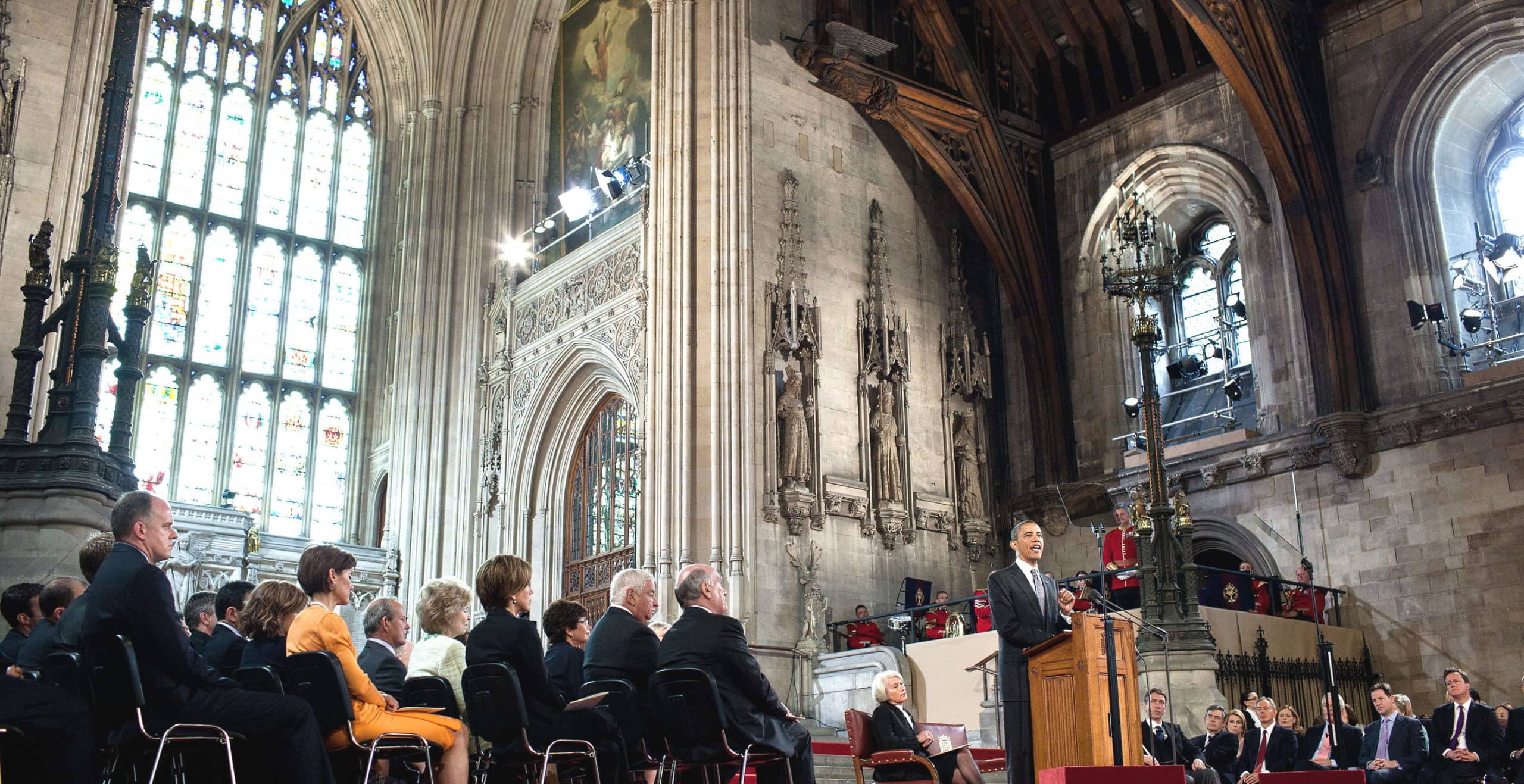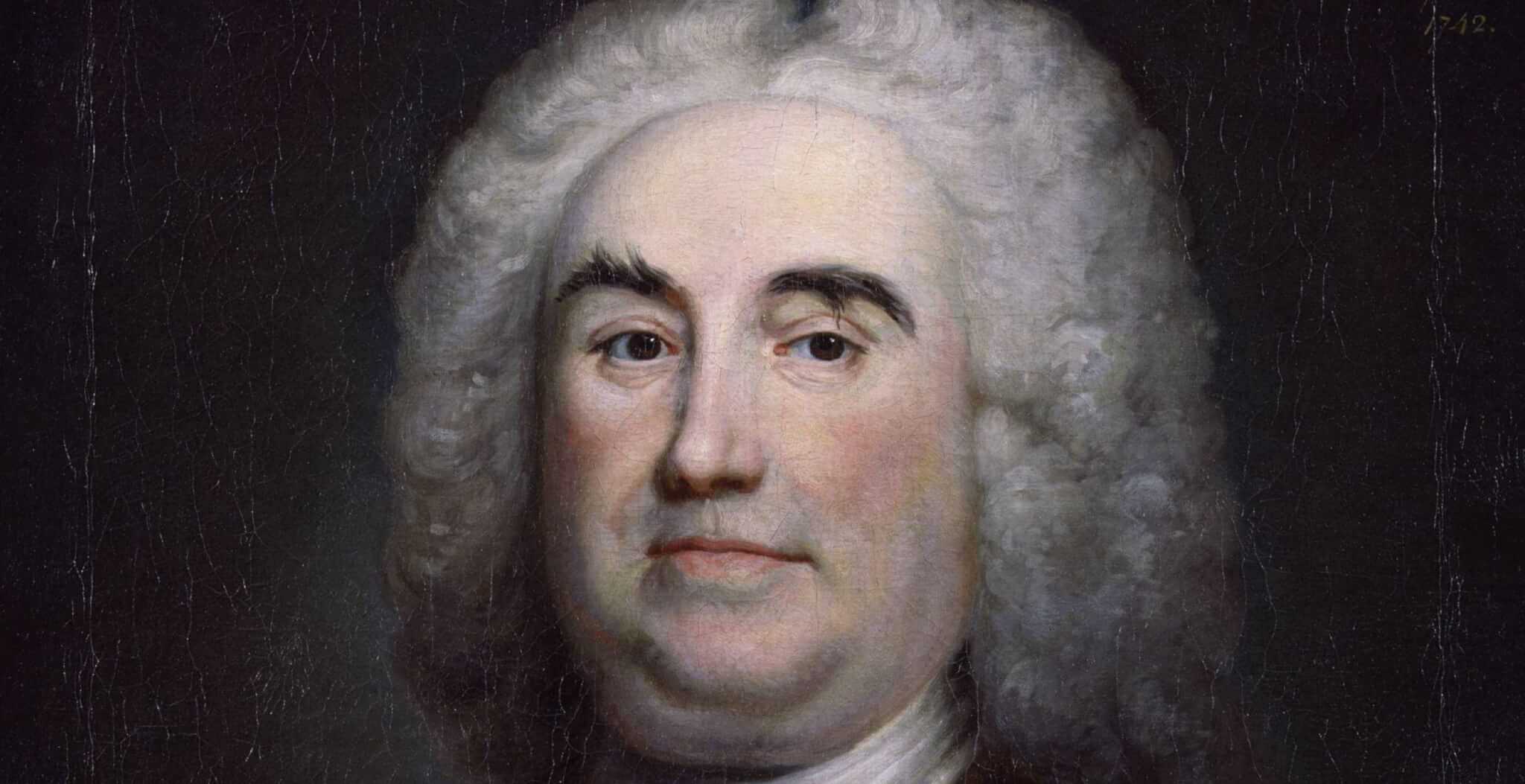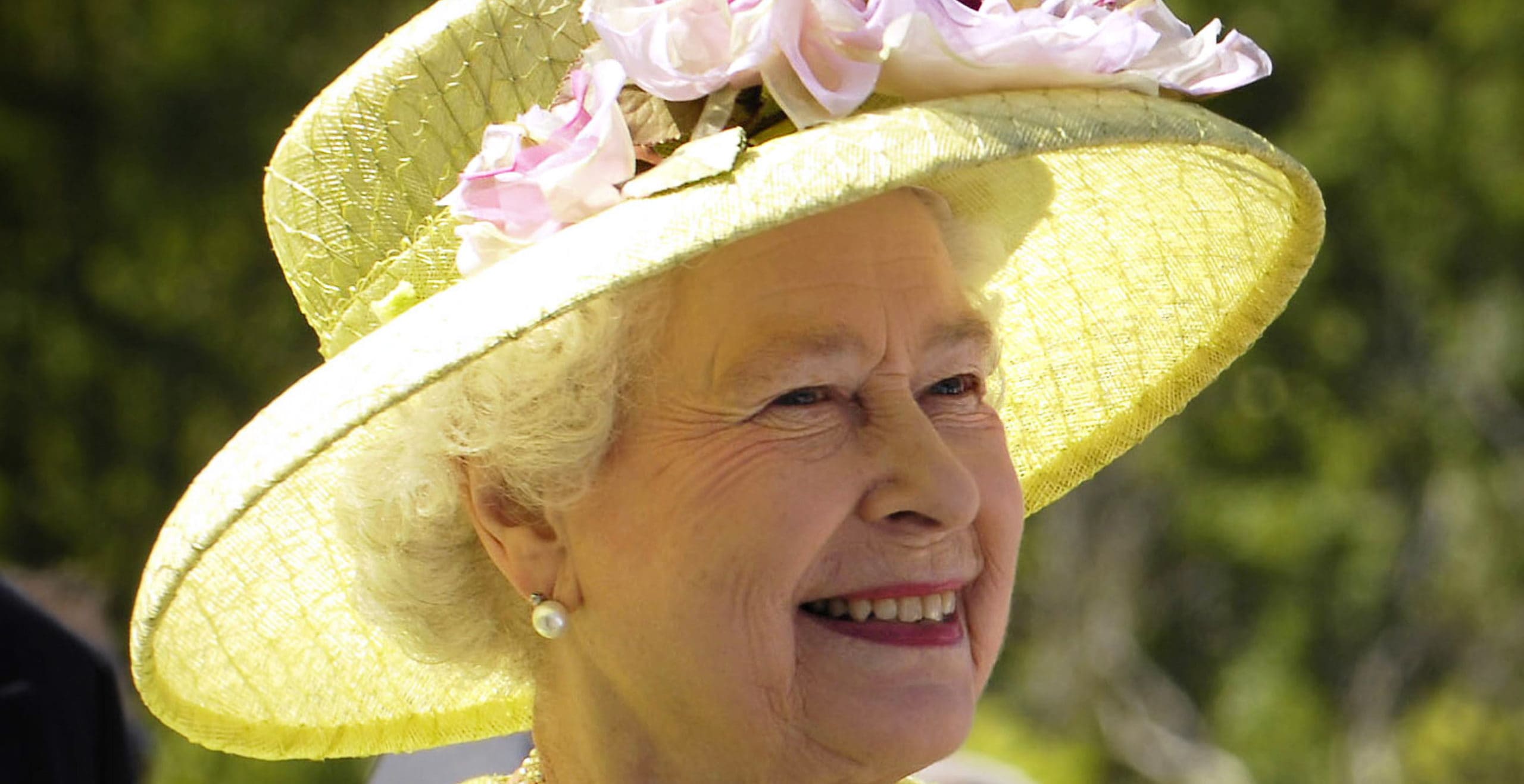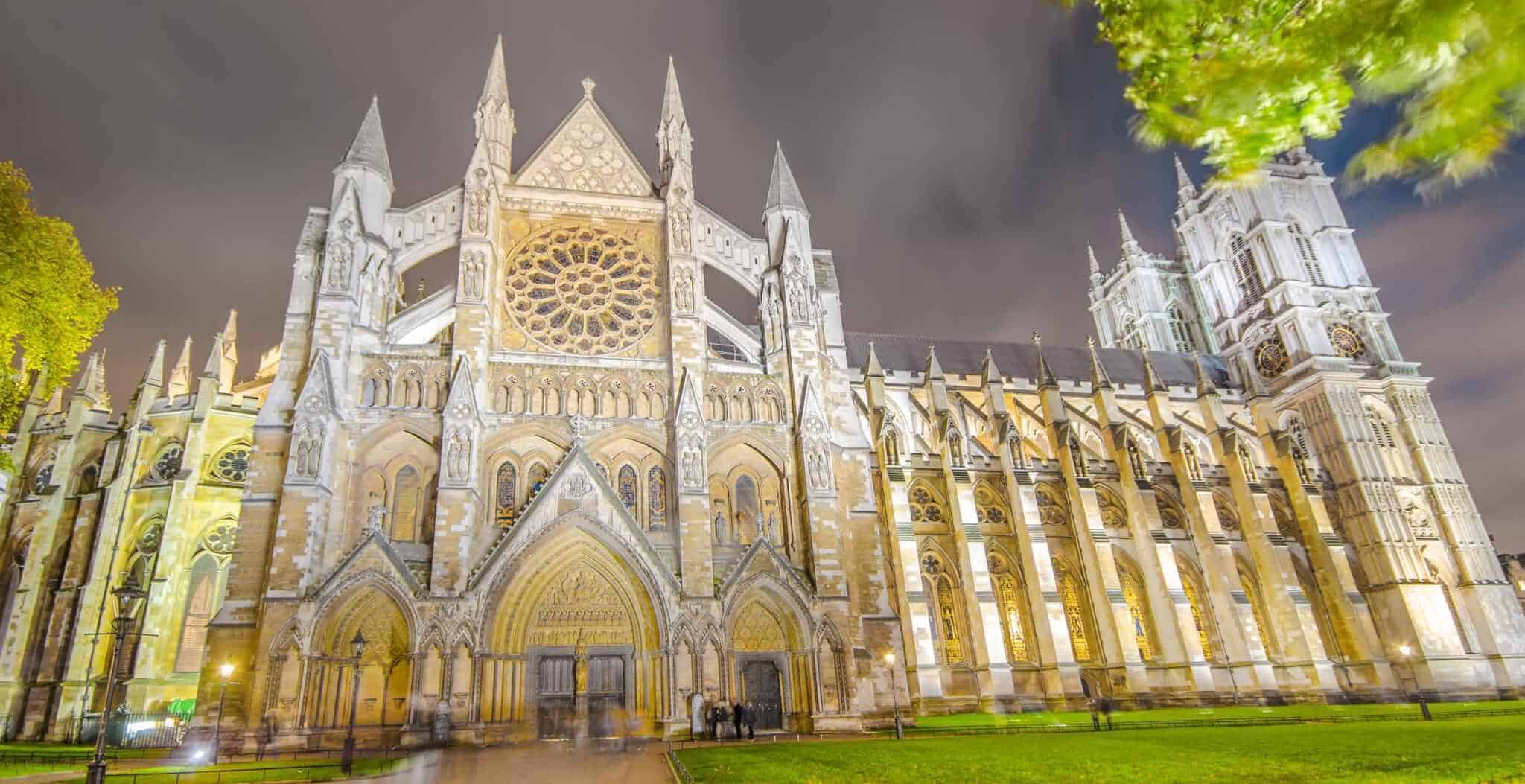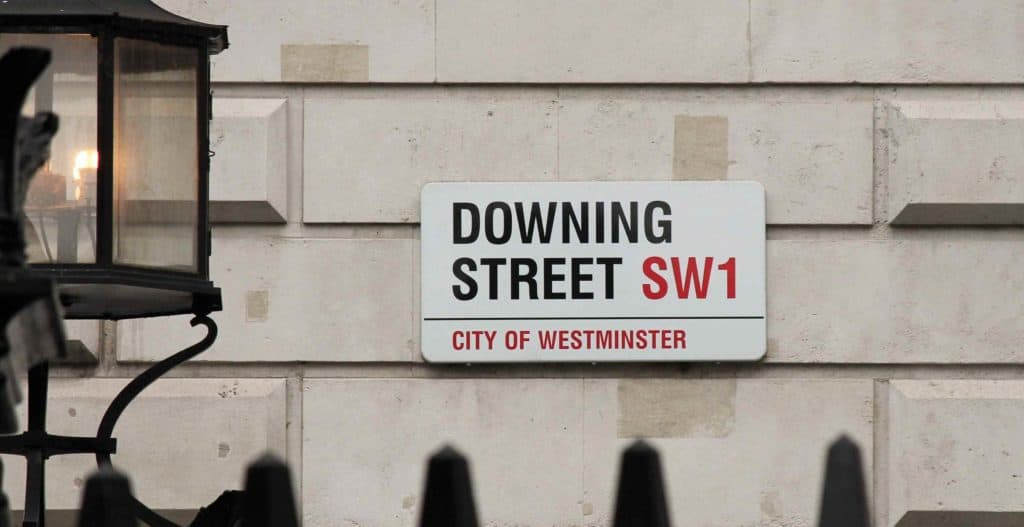Westminster Hall in all its historic grandeur has throughout several centuries played host to some of the most significant moments in British history, most recently the lying-in-state of her late Majesty Queen Elizabeth II.
Lying at the seat of power in London, it is the oldest building on the parliamentary estate, encapsulating the spirit of Westminster which for so long has been an epicentre of authority in the British Isles.
Flanked by law courts, parliament itself and government offices, the history of Westminster Hall is a history of Britain; of monarchs, past and present, administration, tradition and so much more.
The origins of the building itself can be traced back to the time of King William II, the son of William the Conqueror who commissioned Westminster Hall in 1097.

King William II holding Westminster Hall
Completed in just two years, it was the largest hall in England, as well as the being the biggest in Europe at the time. Such a significant structure in size and scale was designed to reflect the king’s power and might, as well as to impress upon his subjects his ultimate authority.
The structure itself measures 73 by 20 metres and was so significant in size that the royal household would often dine in a smaller hall close to the main one.
Of particular architectural significance was the impressive design of the roof, which has become a prominent feature of this impressive historical building that still evokes awe from visitors today.
Richard II’s commission for the roof would make it the largest medieval timber roof of its kind in Northern Europe.
The hammer-beam roof had been undertaken by the chief mason Henry Yevele and supported by the work of carpenter Hugh Herland.
Under the watchful eye of Yevele, who already had significant building project success under his belt including the Tower of London, Westminster Abbey and Canterbury Cathedral, the dangerous work of construction would begin.
Whilst the roof was thought to have originally been supported by pillars, during this new period of construction under Richard II the royal carpenter and mason created a hammer-beam roof.
The sheer scale of the project required oak collected from several woods belonging to the royal household, transported across the country to Westminster for assembly.
The vast, clear span roof would measure around 21m by 73m; no longer sectioned into three, the roof was not only huge in scale but also in grandeur and sophisticated in design, making it a crowning glory of medieval timber architecture.
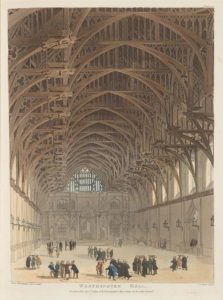
In addition to the impressive architectural centrepiece of the roof design, the hall was also adorned with life-size statues each depicting a king and made from Reigate stone, starting with Edward the Confessor and ending with Richard II, who oversaw this commission. Such emblems proved to be unprecedented at the time and would reflect the prestige and significance of the building itself, becoming symbolic of the seat of power and emanating authority in its design, form and structure.
Since its conception in 1097, Westminster Hall was not only a place steeped in symbolic power but was in fact a functioning setting for the royal household, playing host to ceremony both judicial and monarchical.
Since the time of Henry II, it had been established as a place for a fixed sitting of judges whilst in the time of the Magna Carta, the courts would regularly convene in the Hall. Throughout the tumultuous history of the British Isles, Westminster Hall became a venue for some major historical events, including state trials such as that of King Charles I, marking the end of the English Civil War, as well as prominent figures such as Thomas More, Cardinal John Fisher and the infamous Guy Fawkes.
For centuries Westminster Hall was the place for the highest courts in the land to convene, including the Court of King’s Bench, the Court of Common Pleas and the Court of Chancery. It was not until the late 1800s that the setting for the courts would move to a new Royal Courts of Justice building.
Meanwhile, as the Hall regularly played host to a variety of administrative processes throughout British history, simultaneously it would also host some of the most significant ceremonial processions and events in royal history.
For successive generation of kings and queens, Westminster Hall has been the setting for a coronation banquet, the last of which was held in 1821 for King George IV.
With hundreds of years of history to uncover, recent restorative work has discovered fragments of the King’s Table which was thought to have been used by seventeen monarchs over a three century period and became a symbol of their reigning power.
After the coronation ceremony had taken place, a breakfast would be served at the table with seated at the head, a newly reigning monarch whose power has just been cemented not only by ceremony but the symbolism displayed around them.
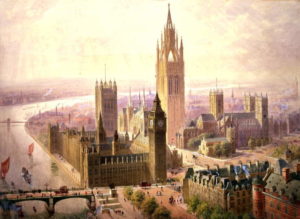
The Palace of Westminster, 1904
Whilst due to growing expenditure concerns, the last banquet of such a kind ended with King George IV. The Hall has in more recent centuries become a location for other royal ceremonial functions both celebratory and solemn in tone.
Westminster Hall was used for jubilant royal celebrations such as the Addresses to the Crown for Queen Elizabeth II’s Silver Jubilee in 1977 and subsequently both the Golden and Diamond Jubilee. Moreover, a 1500 piece stained glass window was designed to commemorate the Diamond Jubilee in the north window of Westminster Hall, providing a permanent architectural reminder of the historical value of this ceremonial building which is a piece of history in itself.
As the Hall resonates with such great value in British royal and political life, it has also served as the venue for foreign leaders to enter the British history books, when they were bestowed with the privilege of giving an address to both Houses of Parliament in Westminster Hall. Most significantly, this honour has been reserved for only a select few such as the South African President Nelson Mandela in 1996, Pope Benedict XVI in 2010 and Barack Obama in 2011, the first US President to be invited to speak in Westminster Hall.
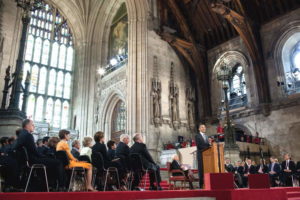
President Obama speaking in Westminster Hall
Sadly, the Hall has also played host to much more solemn occasions such as state funerals and the lying-in-state of members of the royal family. One such example includes the state funeral of Winston Churchill in 1965, one of a select few non-royal to be bestowed with such an honour. In 2002, Queen Elizabeth, the Queen Mother’s lying-in-state took place in the hall and most recently, Queen Elizabeth II in September 2022.
From Wednesday 14th September until the morning of Monday 19th September 2022, Her Majesty Queen Elizabeth II was lying-in-state at Westminster Hall allowing thousands of mourners to file pass her coffin to pay their respects and say a final goodbye.
Since its conception in 1097, Westminster Hall has become a nucleus of royal activity, inextricably tied to the political, monarchical and cultural scene of Britain throughout the centuries.
Westminster Hall’s symbolic strength as a location for the very highest seat of power in the land, representing the legacy of British monarchy, the emergence of British democracy and the tradition of pomp and ceremony, remains the undeniable power of such a building which will continue to serve and play host to the most significant moments of British history for years to come.
Jessica Brain is a freelance writer specialising in history. Based in Kent and a lover of all things historical.
Published: 20th October 2022.
Find out more about this great city by browsing our Selected Tours of London.
